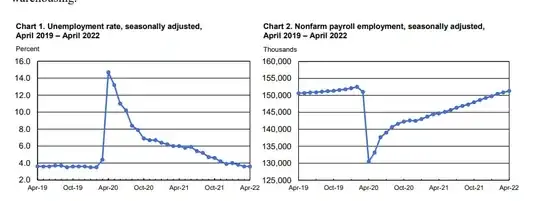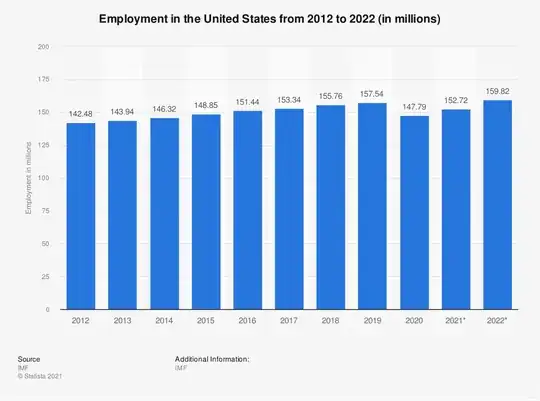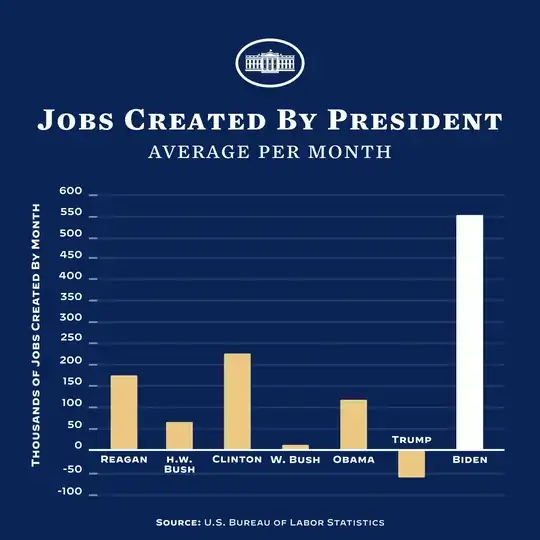Biden became President in January 2021.
According to the Bureau of Labor Statistics
https://www.bls.gov/news.release/pdf/empsit.pdf
The unemployment rate remained at 3.6 percent in April, and the number of unemployed persons was essentially unchanged at 5.9 million. These measures are little different from their values in February 2020 (3.5 percent and 5.7 million, respectively), prior to the coronavirus (COVID-19) pandemic. (See
table A-1.)
The charts show a huge fall in employment in April 2020

and steady recovery since then.
In terms of the claim 'jobs created', this is not a very meaningful metric to start with, because if there is high birth rate (in the middle past) or immigration then you can have many more jobs, but worsening job market.
Unemployment is largely cyclical, and since WW2 has never gone below 2%, whereas the unemployment rate seen at April 2020, was the highest since WW2 (unemployment was even higher in the 1930s).

Under Trump total employment was rising until covid-19

so the initial bar chart for Trump actually represents 'steady growth in jobs', followed by 'a huge drop caused by covid'.
In terms of 'what are these jobs', functionally we can see that the labor market has essentially recovered, in terms of unemployment rates, to the pre-covid position. So we could say 'these are new jobs', in that some businesses went bust, and new businesses are created, we could look at other countries' employment rates before/after covid, etc. e.g., 'have other economies suffered a permanent reduction in jobs?' in order to assess whether this performance is good or merely average, but fundamentally the job market 'has returned to its pre-covid state', and graphs about 'new jobs' probably aren't as useful as 'unemployment rates', in any case, because you can still have 'more jobs' and 'rising unemployment'



